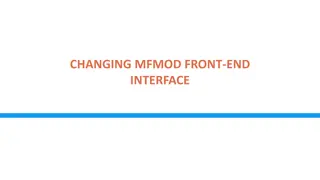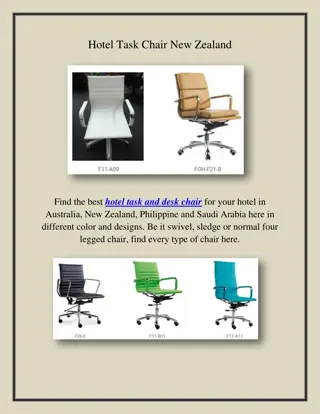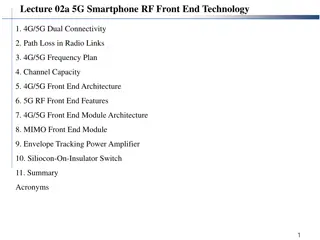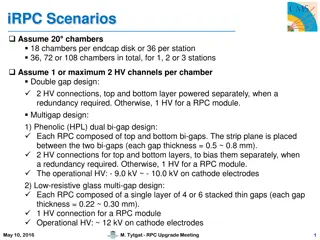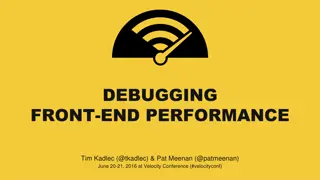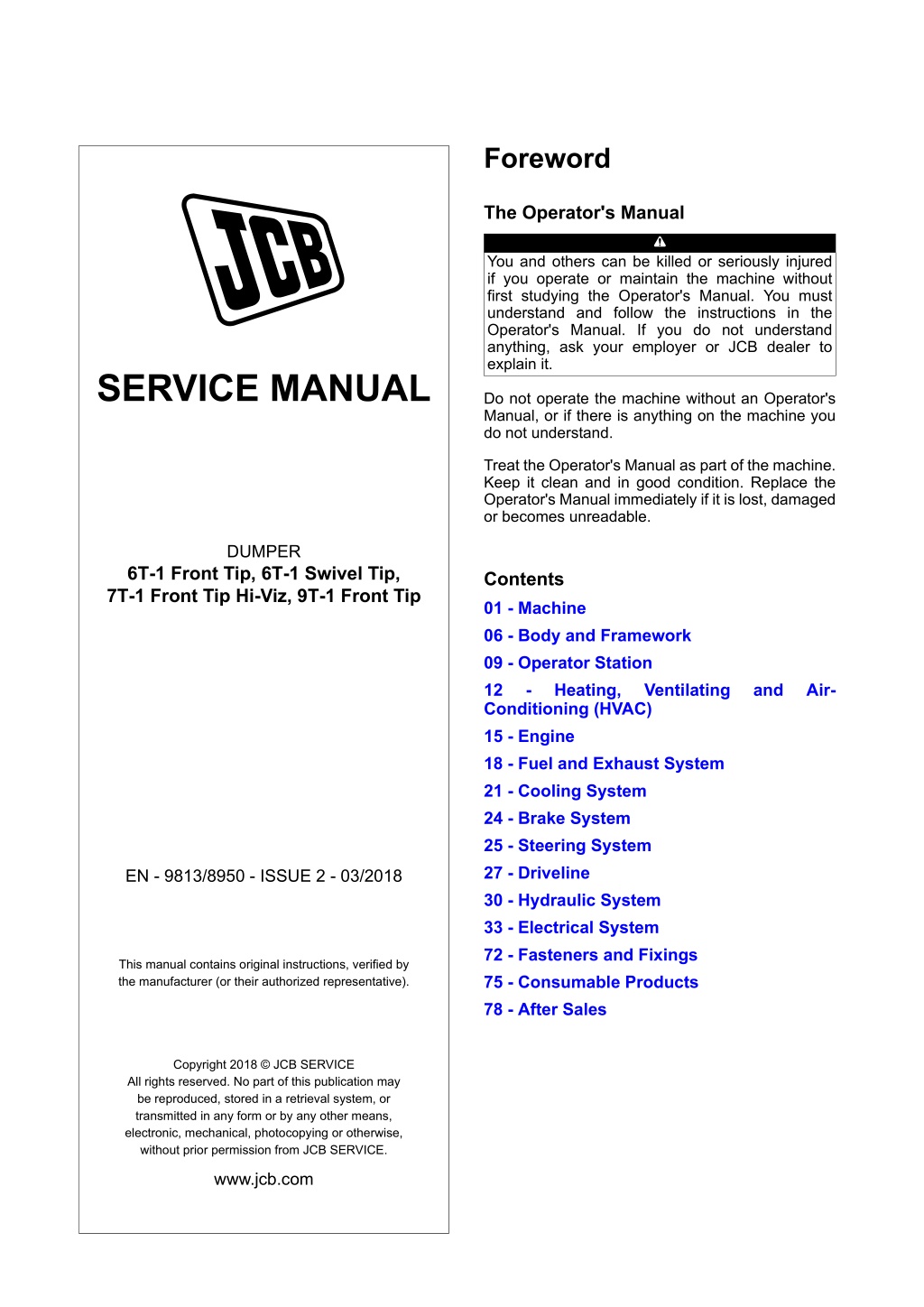
JCB 6T-1 Front Tip, 6T-1 Swivel Tip, 7T-1 Front Tip Hi-Viz, 9T-1 Front Tip Dumper Service Repair Manual Instant Download
Please open the website below to get the complete manualnn//
Download Presentation

Please find below an Image/Link to download the presentation.
The content on the website is provided AS IS for your information and personal use only. It may not be sold, licensed, or shared on other websites without obtaining consent from the author. Download presentation by click this link. If you encounter any issues during the download, it is possible that the publisher has removed the file from their server.
E N D
Presentation Transcript
Foreword The Operator's Manual You and others can be killed or seriously injured if you operate or maintain the machine without first studying the Operator's Manual. You must understand and follow the instructions in the Operator's Manual. If you do not understand anything, ask your employer or JCB dealer to explain it. SERVICE MANUAL Do not operate the machine without an Operator's Manual, or if there is anything on the machine you do not understand. Treat the Operator's Manual as part of the machine. Keep it clean and in good condition. Replace the Operator's Manual immediately if it is lost, damaged or becomes unreadable. DUMPER 6T-1 Front Tip, 6T-1 Swivel Tip, 7T-1 Front Tip Hi-Viz, 9T-1 Front Tip Contents 01 - Machine 06 - Body and Framework 09 - Operator Station 12 - Heating, Conditioning (HVAC) 15 - Engine 18 - Fuel and Exhaust System 21 - Cooling System 24 - Brake System 25 - Steering System 27 - Driveline 30 - Hydraulic System 33 - Electrical System 72 - Fasteners and Fixings 75 - Consumable Products 78 - After Sales Ventilating and Air- EN - 9813/8950 - ISSUE 2 - 03/2018 This manual contains original instructions, verified by the manufacturer (or their authorized representative). Copyright 2018 JCB SERVICE All rights reserved. No part of this publication may be reproduced, stored in a retrieval system, or transmitted in any form or by any other means, electronic, mechanical, photocopying or otherwise, without prior permission from JCB SERVICE. www.jcb.com
15 - Engine 00 - Engine 00 - General Before Removal 16. Disconnect and plug the hoses at the hydraulic pump. 1. Make sure that the engine is safe to work on. If the engine has been running, let it cool before you start the service work. 17. Disconnect the wiring to the hydraulic pump. 18. Remove the gearbox to engine retaining bolts, pull the transmission and converter clear of the engine, make sure that the converter stays mounted on the gearbox shaft. 2. Position the machine on firm level ground. Make the machine safe, refer to (PIL 01-03). 3. Get access to the engine. 19. Attach slings to the engine lifting eyes. Special Tool: Lifting Bracket Front (Qty.: 1) Special Tool: Lifting Bracket Rear (Qty.: 1) Special Tool: Engine Lifting Spreader Bar (Qty.: 1) Remove 1. Disconnect and remove the battery. Refer to (PIL 33-03). 2. Drain the engine oil. Refer to (PIL 15-21). 20. Take the weight of the engine on the hoist and remove the engine mounting bolts. 3. Drain the engine coolant, remove the cooling pack. Refer to (PIL 21-03). 21. Withdraw the engine in a level attitude until the hydraulic pump is clear of the chassis. Raise the engine to lift it clear of the machine. 4. Discharge the hydraulic pressure. Refer to (PIL 30-00). 22. Lower the engine into a suitable stand that is capable of supporting the weight of the engine. 5. Drain the hydraulic tank. Disconnect and plug the hydraulic suction and delivery lines at the transmission pump and gear pump. Label the hoses to ensure correct reassembly. Refer to (PIL 30-00). 6. Disconnect and plug the hydraulic cooler hoses. Label the hoses to ensure correct reassembly. 7. Disconnect the exhaust system. 8. Label the cab heater hoses at the engine block connectors. Release the hose clips and remove the hoses. 9. Disconnect the wiring connections from the starter motor. Refer to (PIL 15-75). 10. Disconnect the wiring connections from the alternator. Refer to (PIL 15-72). 11. Disconnect the wiring connections from the engine sensors and actuators. Refer to (PIL 15-84). 12. Disconnect the fuel supply line at the fuel lift pump and the spill line at the fuel injection pump. Cap all hoses and ports to prevent ingress of dirt. 13. Disconnect the electrical harness at the engine harness. 14. Uncouple ECM (Engine Control Module) machine side connector. Important: Do not touch the connector pins on the ECM or harness connectors. Cover the connectors to prevent contamination. the electrical harness at the 15. Ensure that all relevant harnesses and hoses are unclipped from the engine and tied out of the way. 15 - 32 9813/8950-2 15 - 32
15 - Engine 00 - Engine 00 - General Figure 135. 3. Fill the cooling system with the correct mix of coolant fluid. Refer to (PIL 21-00). 4. Fill and Check the hydraulic fluid level. Refer to (PIL 30-00). B 5. Fill and Check the engine oil level. Make sure the correct oil is used. Refer to (PIL 75-03). 6. On completion, check the hydraulic and cooling system for leakage and levels. 7. Check the function of the drive and loader services. Table 35. Torque Values C Item A Nm 47 A A A Lifting bracket mounting bolts B Lifting equipment C Spreader bar Install 1. Replacement is a reversal of the removal procedure. Note the following: 2. Important: It is vitally important that the torque converter is installed at the gearbox and engine flywheel correctly. Failure to locate the converter correctly will result in damage to the gearbox oil pump on engine start up. 15 - 33 9813/8950-2 15 - 33
https://www.ebooklibonline.com Hello dear friend! Thank you very much for reading. Enter the link into your browser. The full manual is available for immediate download. https://www.ebooklibonline.com
15 - Engine 00 - Engine 00 - General Store and Recommission If an engine is to be placed into storage, all external signs of surface coating damage or corrosion should be cleaned and re-coated. Electrical connectors and components should be coated with a protective spray. Engines should be stored in the original shipping packaging. Damaged or disturbed packaging should be made weatherproof immediately. If an engine is shipped with oil, it should be stored in the correct (upright) position. Capping Engine Openings If an engine is shipped dry of oil, after 6 months it should be filled with oil to the correct level and re- inhibited, refer to hot test description. All openings on the engine must be suitably capped to prevent ingress of water and contamination by foreign particles. All floor stock engines should be stored under cover in dry conditions and not subjected to extreme variations in temperature or humidity. Some engine configurations may differ in detail to the illustrations shown. Make sure you identify and cap all openings. Figure 136. Typical engine 13 5 3 4 1 6 14 17 9 16 12 11 10 2 15 8 7 15 - 34 9813/8950-2 15 - 34
15 - Engine 00 - Engine 00 - General 1 3 5 7 Top hose cap Turbocharger intake cap Turbocharger exhaust outlet cap Dipstick plug 2 4 6 8 Bottom hose cap Turbocharger compressor outlet cap Inlet manifold cap ECM (Engine Control Module) machine harness connector cap Low duty PTO (Power Take-Off) (if installed) cap Cab heater feed and return spigots CCV canister outlet on the closed loop breathing circuit (55kW) SCR (Selective Catalytic Reduction) coolant feed spigot (if installed) 9 Fuel spill back line cap 10 11 13 Heavy duty PTO (if installed) cap Coolant circuit de-gas spigot 12 14 15 Low pressure fuel filter inlet spigot (engines with fuel filter attached) Fuel pump low pressure inlet spigot (engines with no fuel filter attached) 16 17 12 Month Revalidation Procedure Notice: Do not operate the starter motor for more than 20 s at one time. Let the starter motor cool for at least 2 min. 1. Pre-inspection: Table 36. Oil Pressure Switch Set Points 1.1. Inspect packaging for signs of damage. Oil pressure switch closed Oil pressure switch open < 0.6 bar ( 8.7 psi) > 0.6 bar ( 8.7 psi) 1.2. Inspect the caps for signs of damage. 1.3. Inspect openings for signs of water or dirt ingress. 1.4. Inspect the engine for signs of external corrosion. OEM Commissioning Check on Engine Installation After More Than 12 Months 1.5. Inspect the engine for signs of fluid leaks. 1. Flush the coolant system with proprietary flushing solution. 2. From storage: 2. Refill the coolant system with 50/50 mix of long life antifreeze mixture. 2.1. Remove the air intake caps. 2.2. Make sure the engine oil level is correct. 3. Hot test engine according to the hot test profile. Refer to Table 37. 2.3. Using a suitable power supply at the correct voltage, crank the engine over. 4. Drain engine oil and replace engine oil filter. 2.4. During cranking, check that the oil pressure switch opens using a multimeter. The switch is closed when there is no or low oil pressure and opens when oil pressure reaches a set point. After three separate 20 second cranking periods, If the oil pressure switch does not open (indicating no, or low oil pressure), contact your JCB engine dealer. 5. Refill with the correct oil and inhibit the cooling system using the correct product. 6. Record details of work as required. Hot Test Description WARNING When using cleaning agents, solvents or other chemicals, you must adhere to the manufacturer's instructions and safety precautions. 2.5. Recap all engine openings. 2.6. Coat any exposed bare metal with a suitable product. All engines despatched from JCB will have been subjected to a hot test (checking items such as oil pressure, engines speeds, torque values etc.) and therefore the interior surfaces will have been coated with engine oil. 2.7. Electrical connectors and components should be coated with a protective spray if exposed. 2.8. Cover in weatherproof packaging. 2.9. Place in storage, under cover on level ground or shelving. All coolant galleries are coated with CRODAFLUID PA75 corrosion inhibitor. 2.10. Record details of work as required. Stored engines will require re-inhibiting every 12 months, this will include hot testing the engine using a dynamometer. The hot test profile is: 2.11. Do not expose to extremes of temperature or humidity. 15 - 35 9813/8950-2 15 - 35
15 - Engine 00 - Engine 00 - General Table 37. Hot Test Profile Stage Mode Speed (rpm) 830 Torque (Nm) 0 Time (secs) 50 1 Speed/ Torque Speed/ Torque Speed/ Torque Speed/ Torque Speed/ Torque 2 1300 50 60 3 2500 0 60 4 1300 0 25 5 800 0 35 15 - 36 9813/8950-2 15 - 36
15 - Engine 03 - Crankcase 00 - General 00 - General Introduction Introduction .................................................... 15-39 Technical Data ............................................... 15-40 The crankcase is the housing for the crankshaft. The enclosure forms the largest cavity in the engine and is located below the cylinders. It is integral with the cylinder bank and forms an engine block. It has an opening in the bottom to which an oil sump is attached with a gasket and bolted joint. The crankcase protects the crankshaft and connecting rods from foreign objects it also keeps the engine oil contained and allows the oil to be pressurised and also provide the rigid structure with which to join the engine to the transmission. Figure 137. B A A Crankcase B Crankshaft 15 - 39 9813/8950-2 15 - 39
15 - Engine 03 - Crankcase 00 - General Technical Data Table 38. Crankcase and Bedplate Data 4.4 L 103 103.02 mm 4.8 L 106 106.02 mm (1) Cylinder bore Main bearing bolts torque First stage Second stage Final stage Surface finish for cylinder head joint Diameter of first oversize bore Diameter of second oversize bore Main bearing bore (without bear- ings) Numbers 1 to 4 Number 5 Main bearing bore (with bearings) Numbers 1 to 4 Number 5 Camshaft bore Numbers 1 to 4 Number 5 (bush) Permissible wave profile (1) Nominal diameter to be measured 63mm below the cylinder head face. (2) Torque information MUST be used in conjunction with the recommended procedures contained in this manual. Failure to use the appropriate and correct removal, replacement, dismantle and assembly procedures may result in an engine failure in service. Refer also to the procedures for the correct bolt tightening sequence. (3) The crankcase to cylinder head surface may be skimmed and restored using the oversize gaskets (0.25mm and 0.5mm). (2) 50 N m 115 N m Turn a further 180 Rz < 15 m, Rmax < 20 50 N m 115 N m Turn a further 180 Rz < 15 m, Rmax < 20 (3) 103.5 103.52 mm 104 104.02 mm 106.5 106.52 mm 92 92.02 mm 105 105.02 mm 92 92.02 mm 105 105.02 mm 88.047 88.09 mm 100.047 100.09 mm 88.047 88.09 mm 100.047 100.09 mm 60.04 60.07 mm 60.29 60.32 mm wt < 10 m (2.5 distance) 60.04 60.07 mm 60.29 60.32 mm wt < 10 m (2.5 distance) 15 - 40 9813/8950-2 15 - 40
15 - Engine 06 - Cylinder Head 00 - General Remove and Install Special Tools Description Torque Wrench (10-100Nm) 2. Make sure that the engine is safe to work on. If the engine has been running, let it cool before you start the service work. Part No. 993/70111 Qty. 1 3. Get access to the engine. Consumables Description Cleaner/Degreaser - General purpose solvent based parts cleaner 4. Remove the thermostat, refer to (PIL 21-12). Part No. 4104/1557 Size 0.4 L 5. Remove the fuel pipes, refer to (PIL 18-96). 6. Remove the rocker cover, refer to (PIL 15-42). 7. Remove the fuel injectors, refer to (PIL 18-18). 8. Remove the rocker assembly, refer to (PIL 15-42). Before Removal 1. This procedure requires service parts. Make sure you have obtained the correct parts before you start, refer to Parts Catalogue. 9. Remove the exhaust manifold, refer to (PIL 18-24). 10. Remove the inlet manifold, refer to (PIL 18-24). 15 - 46 9813/8950-2 15 - 46
15 - Engine 06 - Cylinder Head 00 - General Figure 139. X 21 22 20 19 18 14 10 6 2 3 7 11 15 16 9 1 8 17 13 5 4 12 Y +90 +180 0 1-18 20 22 Cylinder head fixing bolts (x18) Crankcase Cylinder head gasket 19 21 Cylinder head Location dowels (x2) 15 - 47 9813/8950-2 15 - 47
15 - Engine 06 - Cylinder Head 00 - General Remove Special Tool: Torque Wrench (10-100Nm) (Qty.: 1) 1. Progressively remove the cylinder head bolts in reverse order, starting at bolt 18. Note that the bolts MUST NOT be re-used. Discard the bolts. 4.2. Then, further tighten the bolts, starting with the middle pair and working outwards (in sequence 1- 18) to the 2nd stage pre- torque. 2. Carefully lift the cylinder head from the crankcase. If necessary use a soft face hammer. DO NOT use a lever to separate the cylinder head from the crankcase. Discard the head gasket. 4.3. Then, re-tighten the bolts, starting with the middle pair and working outwards (in sequence 1-18) to the 3rd stage pre-torque. 4.4. Use the angle gauge to angle tighten the bolts, starting with the middle pair and working outwards (in sequence 1-18) to the 4th stage pre-torque. As a visual check, matchmark the bolts to the cylinder head before you start. When the bolts have been angle tightened, the matchmarks will appear as shown at Y. 3. Using a suitable cleaning agent, carefully remove all traces of the head gasket material from the cylinder head and crankcase mating faces. Consumable: Cleaner/Degreaser - General purpose solvent based parts cleaner 4. Check the cylinder head and crankcase mating faces for signs of damage and distortion, refer to Technical Data (PIL 15-06). 4.5. Finally, angle tighten the bolts, starting with the middle pair and working outwards (in sequence 1- 18) for the final stage torque. Before Assembly Table 40. 1. Obtain the correct new cylinder head bolts. Note that the original bolts MUST NOT be re-used. Description Cylinder head to crankcase bolts 1-18 - first stage torque - second stage torque - third stage torque - fourth stage torque - final stage torque Torque Value 2. Obtain the correct replacement head gasket. Note the number of identification holes as shown at X. 40 N m 75 N m 75 N m 90 180 3. Make sure that all items are clean and free from damage and corrosion. Assemble The cylinder head bolts are tightened using a torque and angle method, refer to Fasteners and Fixings, General, Introduction (PIL 72-00). 1. Replacement is the reversal of the removal procedure. 2. Make sure that the location dowels are correctly installed into the crankcase. Use a dowel punch to install the dowels as required. 3. Position a new head gasket on to the crankcase mating face. Make sure that the gasket is installed the correct way around and correctly located over the dowels. 4. Lower the cylinder head on to the crankcase. Make sure that the cylinder head is correctly located on the dowels. Install new cylinder head bolts. Tighten the bolts in five stages, use the torque and angle method, refer to Fasteners and Fixings, General, Introduction (PIL 72-00). 4.1. Tighten the bolts, starting with the middle pair and working outwards (in sequence 1-18) to the 1st stage pre-torque. 15 - 48 9813/8950-2 15 - 48
15 - Engine 09 - Bedplate 00 - General 00 - General Introduction Introduction .................................................... 15-51 Remove and Install ....................................... 15-52 The bedplate acts as the main strength component of the engine. it maintains the correct alignment and supports the weight of the internal components. Figure 140. 1 2 1 Bedplate 2 Crankcase 15 - 51 9813/8950-2 15 - 51
15 - Engine 09 - Bedplate 00 - General Remove and Install Special Tools Description Template for Sealant Bedplate to Crankcase (4 Cyl) Torque Wrench (10-100Nm) 10. Remove the rocker assembly including the push rods, refer to (PIL 15-42). Part No. 892/12356 Qty. 1 11. It is not necessary to remove the cylinder head assembly to remove the crankshaft. If however the cylinder head needs to be removed for other reasons (for piston and connecting rod removal for example) remove it now, refer to (PIL 15-06). 993/70111 1 12. Remove the fuel injection pump, refer to (PIL 18-18). Consumables Description Cleaner/Degreaser - General purpose solvent based parts cleaner Part No. 4104/1557 Size 0.4 L 13. Remove the starter motor, refer to (PIL 15-75). 14. Remove the high duty PTO (Power Take-Off) device (if installed). 15. Position the engine upside down in a suitable jig or fixture, supported at the front of the cylinder block. CAUTION This component is heavy. It must only be removed or handled using a suitable lifting method and device. 16. Remove the flywheel, refer to (PIL 15-54). Before Removal 17. Remove the flywheel housing, refer to (PIL 15-54). 1. This procedure requires service parts. Make sure you have obtained the correct service parts before you start, refer to Parts Catalogue. 18. Remove the fuel injection pump drive gear, refer to (PIL 15-51). 2. Make sure that the engine is safe to work on. If the engine has been running, let it cool before you start the service work. 19. Remove the oil pump, refer to (PIL 15-60). 20. Remove the high duty PTO idler drive gear (if installed), refer to (PIL 15-51). 3. Remove the engine, refer to (PIL 15-00). 21. Remove the crankshaft drive gear, refer to (PIL 15-51). 4. Remove the drive belt, refer to (PIL 15-18). 5. Remove the crankshaft pulley, refer to (PIL 15-12). 22. Remove the camshaft, refer to (PIL 15-15). 23. Remove the rear timing case, refer to (PIL 15-51). 6. Remove the oil sump, refer to (PIL 15-45). 7. Disconnect and remove the fuel pipes from the injectors, refer to (PIL 18-96). 24. If the pistons and connecting rods have not been removed, undo and remove the main bearing caps, refer to (PIL 15-12). 8. Remove the rocker cover, refer to (PIL 15-42). 9. Remove the fuel injectors, refer to (PIL 18-18). 15 - 52 9813/8950-2 15 - 52
15 - Engine 09 - Bedplate 00 - General Figure 141. 5 1 4 11 9 8 10 7 6 2 3 P3 X 18 12 18 18 18 18 13 18 1-10 12 18 T1 Main bearing bolts (x10) Bedplate Upper bearing shell (x5) Lifting bolts (obtain locally) 11 13 P3 Bedplate peripheral bolts (x16) Crankcase O-ring (if installed) 15 - 53 9813/8950-2 15 - 53
15 - Engine 09 - Bedplate 00 - General Remove suitable lifting equipment (if the bedplate is lifted manually, two people will be required). DO NOT use a lever to separate the bedplate. 1. Remove the bedplate peripheral bolts. 2. Progressively remove the main bearing bolts in reverse order starting at bolt 10. The bolts MUST NOT be re-used. Discard the bolts. 4. Remove and discard the O-ring. 5. Carefully remove the upper bearing shells from the bedplate, remove the bedplate. 3. Install the four temporary lifting bolts. Carefully separate the bedplate from the crankcase. Use Figure 142. P2 T4 Y Y A (T5) V T4 P2 P3 B (T5) P2 Y Y T6 18 18 18 X 18 T6 5 18 1 4 T6 11 9 8 W 18 12 T6 10 7 6 2 3 13 1-10 12 18 B Main bearing bolts Bedplate Lower bearing shells (x5) Right side template 11 13 A T3 Bedplate peripheral bolts (x16) Crankcase Left side template Angle Gauge (obtain locally) 15 - 54 9813/8950-2 15 - 54
15 - Engine 09 - Bedplate 00 - General T4 T6 W Y P3 Guide pins (x2 obtain locally) Lifting bolts (x4 obtain locally) Bearing tab Bearing location tab O-ring T5 V X P2 Sealant template Sealant template portion for removal Rear main bearing Anaerobic sealant 15 - 55 9813/8950-2 15 - 55
15 - Engine 09 - Bedplate 00 - General Before Installation as a guide apply beads of sealant P2 around the crankcase/bedplate mating face as shown to the dimension specified. Length/Dimension/Distance: 1.5 mm 1. Clean off all traces of the old sealant compound from the crankcase and bedplate mating faces. 2. Use a suitable degreasing agent to carefully clean the main bearing saddles in the bedplate and crankcase. Take care not to block the oil ways or the piston cooling jets. Consumable: Cleaner/Degreaser - General purpose solvent based parts cleaner 9. Remove the four fixing bolts at positions Y. Remove the templates A and B, make sure you do not smudge the sealant. Discard the templates. 10. Add beads of sealant P2 around the four bolt holes at positions Y, so as to join the sealant beads as shown at X. Important: Anaerobic sealant will not start to cure whilst it is open to the atmosphere, however when air is excluded (for instance when the two parts are put together) it will immediately start to harden. Make sure that all the necessary tools, bolts etc. are readily available prior to assembling the components. The parts must be installed and tightened to the correct torque value within 5 minutes (with a maximum permissible time of 15 minutes). 11. Make sure that the location guide pins T4 are in position in the crankcase. Assemble the bedplate to the crankcase use the alignment guide pins. 12. Note: The bedplate is heavy. Two people will be required to lift and rotate the bedplate safely on to the crankcase. Install new main bearing bolts 1-10. Tighten the bolts to the correct torque value in pairs, starting in the centre and working outwards (in sequence 1-10) to the 1st stage pre- torque. Special Tool: Torque Wrench (10-100Nm) (Qty.: 1) Important: BEFORE installing the bedplate: DO NOT rotate the crankshaft. Make sure that the upper main bearing shells are flush with the bottom face of the crankcase. Install 13. Install the bedplate peripheral bolts. Tighten the bolts to the correct torque value. 1. The installation procedure is the opposite of the removal procedure. Additionally do the following steps. 14. After installation and tightening the bedplate peripheral bolts, further tighten the main bearing bolts in pairs, starting in the centre and working outwards (in sequence 1-10) to the 2nd stage pre-torque. 2. Make sure that all items are clean and free from damage and corrosion. 3. Install the two guide pins T4 to the crankcase bedplate fixing holes as shown. 15. Finally, angle tighten the main bearing bolts in pairs, starting in the centre and working outwards (in sequence 1-10) for the final stage torque. Use the torque and angle method, refer to Fasteners and Fixings, General, Introduction (PIL 72-00). 4. Install the four lifting bolts T6 to the bedplate as shown. 5. Install a new O-ring at the bedplate. Important: If the parts have not been tightened to the correct torque value within the maximum 15 minute time period, then the parts must be separated, thoroughly cleaned and fresh sealant applied. 6. Use a suitable degreasing agent to clean both sides of the lower bearing shells. Assemble the lower bearing shells into the bedplate. Lubricate the lower bearing shells with clean engine oil. Note: Make sure that the location tab W engages in the slot as shown. Consumable: Cleaner/Degreaser - General purpose solvent based parts cleaner After Installation 1. Check that the crankshaft can be freely rotated by hand. Remove the bedplate lifting bolts T6. 2. Carry out the procedures listed, Before removal in reverse order. 7. Note: The sealant template T5 is used on the crankcase, NOT the bedplate. The sealant template T5 comprises of two pieces, A and B. Modify the template A by removing portion V. Special Tool: Template for Sealant Bedplate to Crankcase (4 Cyl) (Qty.: 1) Table 41. Torque Table Item 1-10 (1st Stage) 1-10 (2nd Stage) Torque Value 50 N m 115 N m 8. Locate the holes in the templates A and B using four fixing bolts at positions Y. Use the templates 15 - 56 9813/8950-2 15 - 56
15 - Engine 09 - Bedplate 00 - General Item 1-10 (Final Stage) 11 Torque Value 180 24 N m 15 - 57 9813/8950-2 15 - 57
15 - Engine 12 - Crankshaft 00 - General Operation diameter of the upper main bearing shell allows oil transfer to cross drillings in the crankshaft to feed each of the big end bearings. Crankshaft gear is 'splash' lubricated. Front and rear crankshaft oil seals prevent oil leakage from, and dirt ingress to, the engine. Lubrication Oil is fed from the main gallery via five drillings, one to each of the main bearings. A groove around the Figure 144. 1 Main gallery 3 Main bearings 5 Cross drillings 7 Crankshaft oil seal 2 Drillings (x5) 4 Big end bearings 6 Crankshaft gear 8 Crankshaft oil seal 15 - 62 9813/8950-2 15 - 62
15 - Engine 12 - Crankshaft 00 - General Check (Condition) Figure 147. 1. Check the main bearing surfaces for damage and excessive wear. Figure 145. C D A C J-jets D Fixing screws A Main bearing shells 2. Measure the crankshaft diameters to confirm they are within service limits, refer to Technical Data (PIL 15-12). Figure 146. B B Crankshaft 3. Check that the oil-way cross drillings in the crankshaft are clear and free from debris. Blocked or restricted oil-ways will cause oil starvation at the big end bearings. 4. Check that the piston cooling J-jets are clear. If the J-jets cannot be cleared remove the fixing screws. Remove theJ-jets and discard them. 5. Install new J-jets. 15 - 63 9813/8950-2 15 - 63
15 - Engine 12 - Crankshaft 00 - General Remove and Install Consumables Description Cleaner/Degreaser - General purpose solvent based parts cleaner reasons (for piston and connecting rod removal for example) remove it now, refer to (PIL 15-06). Part No. 4104/1557 Size 0.4 L 12. Remove the fuel injection pump, refer to (PIL 18-18). 13. Remove the starter motor, refer to (PIL 15-75). 14. Remove the high duty PTO device (if installed). CAUTION This component is heavy. It must only be removed or handled using a suitable lifting method and device. 15. Position the engine upside down in a suitable jig or fixture, supported at the front of the cylinder block. Before Removal 16. Remove the flywheel, refer to (PIL 15-54). 1. This procedure requires service parts. Make sure you have obtained the correct service parts before you start, refer to Parts Catalogue. 17. Remove the flywheel housing, refer to (PIL 15-54). 18. Remove the fuel injection pump drive gear, refer to (PIL 15-51). 2. Make sure that the engine is safe to work on. If the engine has been running, let it cool before you start the service work. 19. Remove the oil pump, refer to (PIL 15-60). 3. Remove the engine, refer to (PIL 15-00). 20. Remove the high duty PTO idler drive gear (if installed), refer to (PIL 15-51). 4. Remove the drive belt, refer to (PIL 15-18). 21. Remove the crankshaft drive gear, refer to (PIL 15-51). 5. Remove the crankshaft pulley, refer to (PIL 15-12). 22. Remove the camshaft, refer to (PIL 15-15). 6. Remove the oil sump, refer to (PIL 15-45). 23. Remove the rear timing case, refer to (PIL 15-51). 7. Disconnect and remove the fuel pipes from the injectors, refer to (PIL 18-96). 24. If the pistons and connecting rods have not been removed, undo and remove the main bearing caps, refer to (PIL 15-12). 8. Remove the rocker cover, refer to (PIL 15-42). 9. Remove the fuel injectors, refer to (PIL 18-18). 25. Remove the bedplate, refer to (PIL 15-09). 10. Remove the rocker assembly including the push rods, refer to (PIL 15-42). Remove 11. It is not necessary to remove the cylinder head assembly to remove the crankshaft. If however the cylinder head needs to be removed for other 1. Remove the thrust washers between the crankshaft and crankcase rear main bearing. 15 - 64 9813/8950-2 15 - 64
15 - Engine 12 - Crankshaft 00 - General Figure 148. B A A C A Thrust Washers C Rear main bearing B Crankshaft Before Installation 2. Put labels on the thrust washers to make sure that they are installed in the correct positions during assembly. 1. Clean off all traces of the old sealant compound from the crankcase and bedplate mating faces. 3. Use suitable lifting equipment to carefully lift the crankshaft from the crankcase (if the crankshaft is lifted manually, two people will be required). 2. Use a suitable degreasing agent to carefully clean the main bearing saddles in the bedplate and crankcase. Take care not to block the oil ways or the piston cooling jets. Consumable: Cleaner/Degreaser - General purpose solvent based parts cleaner 4. Carefully lift out the bearing shells. Figure 149. D Important: Cleanliness is of the utmost importance. Blocked oil-ways or oil jets will cause engine failure. Before you install the crankshaft make sure that ALL oil-ways and jets are clear and free from debris. Install 1. The installation procedure is the opposite of the removal procedure. Additionally do the following steps. 2. Make sure that all items are clean and free from damage and corrosion. 3. If removed or a new crankcase is being installed then install cooling J jets as follows: D Main bearing shells 5. It is recommended that the bearing shells are replaced. If however they are to be used again, put label on the shells to make sure that they are installed in their original positions during assembly. 6. Inspect the crankshaft and main bearings etc. for damage and excessive wear. Refer to Check Condition (PIL 15-12). 15 - 65 9813/8950-2 15 - 65
15 - Engine 12 - Crankshaft 00 - General Figure 150. Figure 151. G D E F D Main bearing shells G Bearing location tab E J jets (x4) F Fixing screws 4.1. Use a suitable degreasing agent to make sure that the surface of the upper bearing shells are clean. Consumable: Cleaner/Degreaser - General purpose solvent based parts cleaner 3.1. Insert the cooling jets into the crankcase. 3.2. Note: There are different types of cooling jets installed depending on the engine application. The jets are colour coded. 4.2. Assemble the bearing shells into the crankcase bearing saddles. Make sure that the location tab engages into the slot as shown. 3.3. Be sure to install the correct jets. Refer to the relevant parts catalogue for the correct cooling jet identification. 4.3. Important: Make sure that the oil-way holes in the bearing saddles align with the holes in the bearing shell. If the holes are even partially misaligned the piston cooling oil jet will be restricted, causing the engine to fail. 3.4. Tighten the retaining screws to the correct torque value. 4. Install the upper bearing shells as follows: 4.4. Lubricate the upper bearing shells with clean engine oil. 5. Use suitable lifting equipment (if the crankshaft is lifted manually, two people will be required), to carefully lower the crankshaft into the crankcase. DO NOT rotate the crankshaft, the bearing shells can become dislodged, refer to step 4. 6. Install the thrust washers as follows: 15 - 66 9813/8950-2 15 - 66
Suggest: If the above button click is invalid. Please download this document first, and then click the above link to download the complete manual. Thank you so much for reading
15 - Engine 12 - Crankshaft 00 - General Figure 152. A B H A A C A Thrust washers C Rear main bearing B Crankshaft H Oil slot - thrust washers 6.1. Slide the thrust washers between the crankshaft and the crankcase rear main bearing. 6.2. Make sure that they are installed in the correct positions, with the two slots facing outwards from the bearing saddle. 6.3. If necessary, push the crankshaft forward and then backwards to obtain clearance to install the thrust washers. 6.4. DO NOT rotate the crankshaft, the bearing shells can become dislodged, refer to step 4. 7. Check that the crankshaft end float is within service limits, refer to Technical Data (PIL 15-12). Table 43. Torque Values Item F Nm 24 15 - 67 9813/8950-2 15 - 67
https://www.ebooklibonline.com Hello dear friend! Thank you very much for reading. Enter the link into your browser. The full manual is available for immediate download. https://www.ebooklibonline.com






